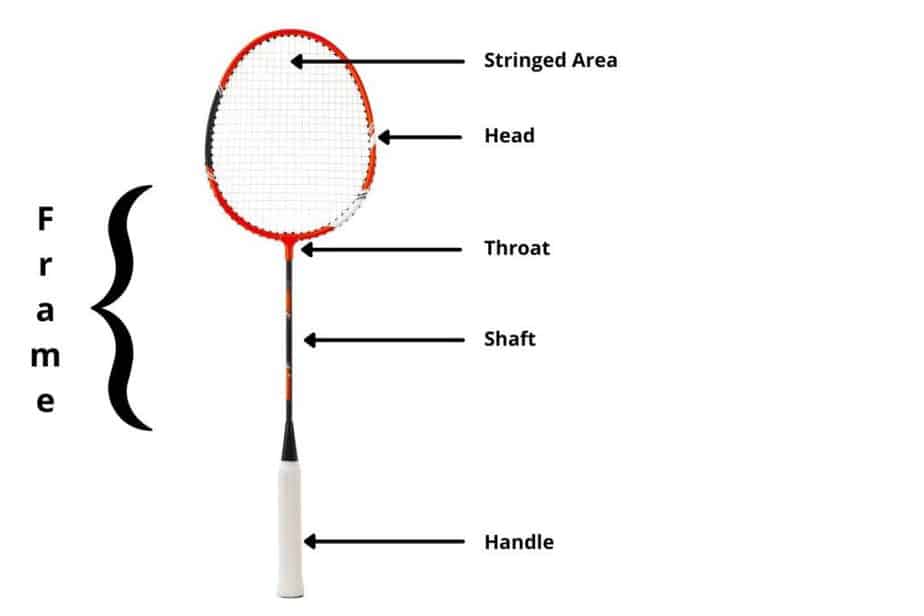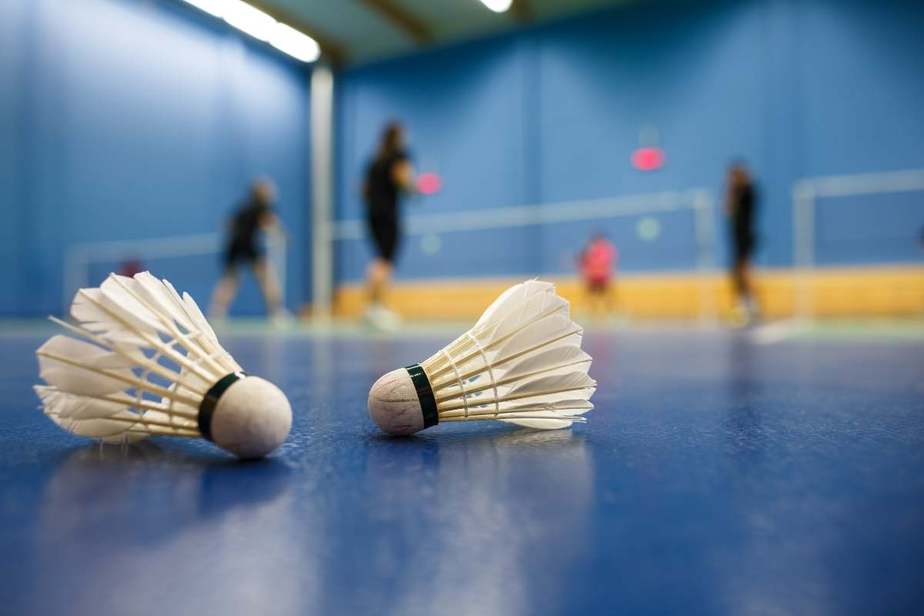11 Fascinating Badminton Facts (#5 Might Be Useful)
When immersing yourself in badminton, there are more straightforward questions and answers, and then some unusual ones. Whether you are a beginner or a master badminton player, the facts below will interest you, and some of them can be quite unusual, which can save you time, money, and effort.
In this article, you will learn facts about the badminton racket, shuttlecocks, strings, washing, net, and even some rules. It’s safe to say that it’s going to be a fun article.
Without a further due, take a look at these 11 facts about badminton!
Contents
- 1. How Many Holes Are There In a Badminton Racket
- 2. What Is the Standard Lenght of a Badminton Racket
- 3. How Many Meters of String You Need for a Badminton Racket
- 4. How Many Rackets Can a Reel String
- 5. What Are the Parts of a Badminton Racket
- 6. Can You Wash a Badminton Racket
- 7. What Are the Parts of a Shuttlecock
- 8. Why Are Shuttlecock Feathers From the Left Wing
- 9. Can You Wash Feather Shuttlecocks
- 10. What Happens If the Shuttlecock Hits the Net
- 11. How Many Holes Are There In a Badminton Net
- My Favorite Badminton Equipment
1. How Many Holes Are There In a Badminton Racket
Generally, there are 72 to 96 holes on a badminton racket. The number of holes depends on what kinds of grommets the frame uses, how large the racket head is, and the density of the holes. The closer the holes are, the smaller the tension needs to be to generate the same power.
The most common grommet hole count in a badminton racket is 72. However, many manufacturers make ones that have more, which increases the lifespan of the frame and strings. This is possible because the tension needs to be less, so the straining tension force isn’t high.
2. What Is the Standard Lenght of a Badminton Racket
The standard length of a badminton racket is between 665mm to 675mm. This is the range where the control, speed, and power are in a good balance. Typically, rackets over 675mm are considered extra-long, and the maximum length that a badminton racket can be is 680mm, according to The Laws of Badminton.
Badminton rackets range from 665mm (26.18″) to 680mm (26.77″), which are good lengths because if they were shorter, your reach would seriously suffer. On the other hand, if they were longer than 680mm, your control would be well… Out of control.
The only exception is junior badminton rackets that range between 535mm (21″) to 585mm (23″). Naturally, childer that are much shorter in height need smaller badminton rackets to have great control over the sport.
3. How Many Meters of String You Need for a Badminton Racket
Generally, 32.8 feet (10 meters) will be enough string for all badminton head sizes and tensions, including pre-weaving. If you want to be on the safe side, you can cut 1.6ft (50cm) more string. Some rackets can be strung with less than 27.8ft (8.5m) of string if they are strung to high tension.
Another thing to keep in mind is how much experience do you have. If you have never strung a racket before, I recommend cutting more string to be safe. However, if you are an experienced stringer, you can survive with less string, as you already know.
4. How Many Rackets Can a Reel String
You can string 18 to 23 badminton rackets with a reel of string. The amount depends on how experienced you are, how large the stringed area is, and the tension you will string the rackets. On average, you can string 20 rackets with a 200m (656ft) reel as the average string length is 10m (32.8ft).
If you are a beginner stringer, I highly suggest that you cut a bit more string than risk it because 1 meter (3.28ft) of an additional string isn’t much when compared to wasted 9 meters (29.5ft) if the string length is too short.
Anyways, reels of string are bought to save money, which is a wise investment if you ask me. My favorite badminton string is the Yonex Bg 65, as it is very durable and gives a good feel to the game. You can get the Yonex Bg 65 as a reel from Amazon.
5. What Are the Parts of a Badminton Racket

The parts of a badminton racket are the handle, shaft, throat, head, and stringed area. You will hold the racket from the handle, and the shaft is the connecting part of the handle and throat. The throat connects shaft and head, and the head is the circular part where you will install the strings bed.
I know, that’s a lot of words, but it’s really quite easy to learn as there are only five parts. When you think about it, the names really describe the parts well. However, so that you will fully understand, I’ll go into more detail about each part below.
- The Head is the circular part of the racket where you will add the strings. The head is also the widest part of the racket, and it can be a maximum of 230mm in width. Also, 72 to 96, there are grommet holes where you will thread the strings from.
- Stringed Area is the center of the head and the part that you use to strike the shuttlecock. Different kinds of string types that you can use will have different effects on control, speed, and durability. You can also decide on the tension you want the strings strung to, giving you more control or power.
- The Throat is a small and durable part at the end of the shaft and the bottom of the head, supporting the whole structure. However, not all badminton rackets have a throat as it is optional, and by removing it, the stringed area can be bigger.
- The Shaft is the longest and narrowest part. There are two kinds of shafts: flexible and stiff. A Flexible shaft offers you more power as it bends slightly, which sacrifices the speed that the stiff shaft is meant for. Most professional players use stiff shafts to increase the pace and speed of the game.
- The Handle is the part that connects to the shaft and where you hold the racket from. The handle is always covered with a grip that provides comfort and traction and shock and sweat absorption.
6. Can You Wash a Badminton Racket
You can wash a badminton racket with a slight amount of water and mild soap. However, do not soak the racket because doing so especially often can damage the racket. If you use natural gut strings, you should check whether they are coated with moisture repellant coating. If not, don’t wash them.
You shouldn’t spray water on the grip either because excessive water isn’t good for it. To clean the racket’s grip, use mild soap and water to rub it clean and dry them afterward. This way, no moisture damage will appear.
7. What Are the Parts of a Shuttlecock
A shuttlecock consists of two parts called the cork head and feather skirt. The cork is the hard part of the shuttlecock that you will strike, and it’s made from a cork tree. The feather skirt consists of 16 left-wing feathers of a duck or geese. Alternatively, the feather skirt can be made of nylon.
If you are interested in the difference between feather and nylon shuttlecocks, I suggest that you look at my article. But in short, a feather shuttlecock is better to play with, and a nylon shuttlecock is more durable and weatherproof.
8. Why Are Shuttlecock Feathers From the Left Wing
Shuttlecocks are made from left-wing feathers because when the shuttlecock is struck, it will spin clockwise, which is essential for badminton. If the shuttlecock were constructed of right-wing feathers, it would spin counterclockwise, which would be too confusing. Also, the aerodynamics are superior.
This is also confirmed by Paisan Rangsikiptho, a representative of the Badminton World Federation. Well, what if the shuttlecock would be made out of 8 left and 8 right-wing feathers? This would lead to a slow and clumsy shuttlecock that wouldn’t be nearly enough for badminton and the required speed for it.
9. Can You Wash Feather Shuttlecocks
You can wash feather shuttlecocks by humidifying and brushing them with a gentle brush. You can humidify shuttlecocks by leaving them on a countertop while taking a hot shower, boiling water, and allowing the steam to go inside the tube or using a shuttlecock humidifier. Brush with extra care.
Humidifying your shuttlecocks will also increase their durability because feather shuttlecocks can become dry and brittle quite fast. By adding a little moisture to the feathers, they will have a more natural condition which can also increase the feel of the game, in addition to the improved durability.
10. What Happens If the Shuttlecock Hits the Net
When your shuttlecock hits the net in badminton, it’s called a net cord. When experiencing a net cord, you will win the point if the shuttlecocks drop on the opponent’s side of the court. However, if the shuttlecock is left on your side of the court, your opponent will win the point.
To further learn badminton rules, take a look at this Simplified Rules of Badminton profited by BWF
11. How Many Holes Are There In a Badminton Net
An international standard badminton net has 5063 holes. However, different badminton gyms and courts may use nets from different manufacturers, making the net hole number vary. Many commercially available nets have 5440 holes, which slightly vary from the international standards.
If you want to accurately know the holes of your own net, you can quickly count them by counting one hole row on both the width and length of the net and multiplying them together.
For example, if a badminton net would have 10 holes length-wise and 70 holes width-wise, it would be counted as 10×70=700.
Be that as it may, the dimensions of proper badminton nets are always the same, regardless of the exact hole count.
My Favorite Badminton Equipment
Thanks for reading this article. I hope it brought you great value that you can implement into your own life! Below you can find some badminton equipment that I love and think you could like!
- Racket: My favorite badminton racket is the Yanox Carbonex 8000 because it fits well with my controlling playstyle. This racket is made from graphite & aluminum and weighs around 85 to 90grams, so it’s medium weight and durable. I love the control and accuracy of this racket, and the design makes me want to play badminton.
- Shuttlecocks: I like to play with yellow nylon shuttlecocks because most courts I play badminton on have a light environment, and I’m not playing at a competitive level. So, I don’t want to spend insane much money on feathers shuttlecocks because they often break. That’s why Yonex Mavis 350 shuttlecocks are my absolute favorite.
- Badminton shoes: When it comes to badminton shoes, they need to have excellent support, shock absorption, and cushioning. As you can see, I’m a Yonex lover, and that’s why I play badminton with Yonex Power Cushion Eclipsion Z badminton shoes!
- Fan Equipment: If you’re a fan more than a player, you don’t want to miss Fan Equipment by Fanatics. You can find items from various sports that bear your favorite team’s logo, such as jerseys, gift ideas, or other surprising things.

